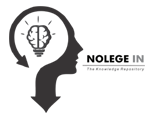Your Portfolio, Your Passport: Navigating the Global Design Job Market
Abstract
The portfolio provides industrial and product design professionals with career opportunities and further professional development in the field of competition. This research discusses the relevance of professional and diverse portfolio building for presenting creativity, technical skills, and problem-solving aptitudes to potential employers. In addition to a gallery of previous works, a portfolio should demonstrate a designer's approach to creating ideas or upgrading designs, as well as the design thinking process that fills a gap between style and usability. Some of the matters discussed pertain to the best practices of portfolio use, the choice of projects to include, the narrative focus, and high visual and presentation quality. This paper has identified the customization trends to the specific requirements of a job and the need to adapt the service to the online environment, which is crucial in differentiating between the providers' capacity providers in this line. Moreover, the paper also looks at various drawbacks that designers encounter, including quality versus quantity, changes in technologies, and updating portfolios to reflect market changes. This paper identifies educational institutions and professional networks as important sources of critique, projects, and mentorship in the portfolio's construction. It is not only for finding the first job but also for a life portfolio, recognition in the specific industry, and interdisciplinary fields. This paper explains how strategic creation and management of a portfolio can help designers in the global job market achieve credibility, innovation, and a long-term career in design.
References
Brown, T., & Wyatt, J. (2010). Design Thinking for Social Innovation. Stanford Social Innovation Review, 8(1), 30–35.
Cross N. Design thinking: Understanding how designers think and work. Bloomsbury Publishing; 2023 Jun 15.
Rousseau DL. Democracy and war: Institutions, norms, and the evolution of international conflict. Stanford University Press; 2005 Mar 24.
Law EL, Roto V, Hassenzahl M, Vermeeren AP, Kort J. Understanding, scoping and defining user experience: a survey approach. InProceedings of the SIGCHI conference on human factors in computing systems 2009 Apr 4 (pp. 719-728).
Nyati S. Revolutionizing LTL carrier operations: A comprehensive analysis of an algorithm-driven pickup and delivery dispatching solution. International Journal of Science and Research (IJSR). 2018 Feb;7(2):1659-66.
Yang M, Wang T, Lim CP. E-portfolios as digital assessment tools in higher education. InLearning, Design, and Technology: An International Compendium of Theory, Research, Practice, and Policy 2023 Oct 15 (pp. 2213-2235). Cham: Springer International Publishing.
Nyati S. Transforming telematics in fleet management: Innovations in asset tracking, efficiency, and communication. International Journal of Science and Research (IJSR). 2018 Oct;7(10):1804-10.
Planer R, Wolf C, Godulla A. Digital storytelling beyond flagship projects: Exploring multimedia work routines in higher education practical training. Journalism Practice. 2022 Jul 3;16(6):1247-64.
Kumar A. The convergence of predictive analytics in driving business intelligence and enhancing DevOps efficiency. International Journal of Computational Engineering and Management. 2019;6(6):118-42.
Koskinen I, Zimmerman J, Binder T, Redstrom J, Wensveen S. Design research through practice: From the lab, field, and showroom. IEEE Transactions on Professional Communication. 2013 Aug 21;56(3):262-3.
Gill A. Developing a real-time electronic funds transfer system for credit unions. International Journal of Advanced Research in Engineering and Technology (IJARET). 2018;9(1):162-84.
Eraut M. Non‐formal learning and tacit knowledge in professional work. British journal of educational psychology. 2000 Mar;70(1):113-36.
Jewell DO, Jewell SF, Kaufman BE. Designing and implementing high-performance work systems: Insights from consulting practice for academic researchers. Human Resource Management Review. 2022 Mar 1;32(1):100749.
Kagan S, Hauerwaas A, Helldorff S, Weisenfeld U. Jamming sustainable futures: Assessing the potential of design thinking with the case study of a sustainability jam. Journal of Cleaner Production. 2020 Apr 1;251:119595.
Nguyen PT, Nguyen QL, Nguyen LT, Huynh VD. Investigating the e-learning choice under the learners’ perspective using demand driven learning model: insights from Vietnam. Scientific Reports. 2024 Nov 10;14(1):27437.
Kanungo D. UX Decoded: Think and Implement User-Centered Research Methodologies, and Expert-Led UX Best Practices (English Edition). BPB Publications; 2022 Apr 23.
Doppelt Y. Implementation and assessment of project-based learning in a flexible environment. International journal of technology and design education. 2003 Oct;13:255-72.
Law EL, Roto V, Hassenzahl M, Vermeeren AP, Kort J. Understanding, scoping and defining user experience: a survey approach. InProceedings of the SIGCHI conference on human factors in computing systems 2009 Apr 4 (pp. 719-728).
Moulard JG, Raggio RD, Folse JA. Disentangling the meanings of brand authenticity: The entity-referent correspondence framework of authenticity. Journal of the Academy of Marketing Science. 2021 Jan;49:96-118.Patel, S. (2021). The role of feedback in professional growth for designers. Design Mentorship Review, 9(3), 72-81.





